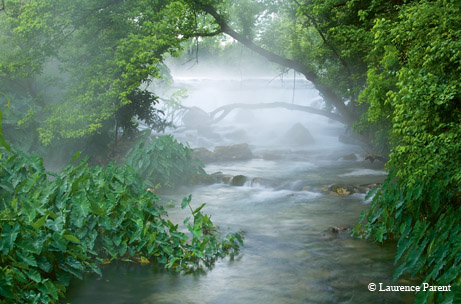
Saving the Springs
After decades-long battles, stakeholders have created the Edwards Aquifer Recovery Implementation Program.
By Melissa Gaskill
Water. For centuries, Texans have searched for, used, wasted, stored, manipulated and fought over it. It seems unlikely, then, that 26 disparate groups could agree on anything having to do with this precious resource, much less come up with a way to preserve two iconic springs. Yet it might actually happen.
Seven major and dozens of smaller outflows along a cliff in New Braunfels form Comal Springs, source of the 2-mile-long eponymous river and home to endangered riffle and dryopid beetles. San Marcos Springs includes more than 200 outflows into Spring Lake, centerpiece of Texas State University’s Aquarena Center and a world-class biodiversity site. The springs and the San Marcos River are designated critical habitat for endangered Texas blind salamanders, San Marcos gambusias, fountain darters and Texas wild rice.
Both of these springs flow from the Edwards Aquifer, a vast reservoir within the nooks and crannies of underground rock stretching nearly 200 miles along the Balcones Fault from Brackettville to Austin. The main source of water for San Antonio, this aquifer also supplies between 30 and 70 percent of the water in the Guadalupe River, which feeds San Antonio Bay, home of the whooping crane and many a fisherman’s honey hole. In fact, an enormous swath of Texas depends on the health of the Edwards Aquifer and its springs. If water represents a thorny issue, this aquifer is a veritable bramble patch.
Without going into the long and complex history, things came to a head in 1991, when increasing demand threatened to leave the springs literally high and dry. The Endangered Species Act provided the basis for a lawsuit seeking minimum flows to protect denizens of the springs, and, therefore, the springs themselves.

When the lawsuit failed to resolve all the issues, says Cindy Loeffler, TPWD water resources branch chief, the U.S. Fish and Wildlife Service initiated the Edwards Aquifer Recovery Implementation Program. The Legislature subsequently specified stakeholders, including San Antonio, other area municipalities, state agencies, environmentalists, farmers, businesses and outdoor enthusiasts. Stakeholders had until 2012 to develop and have approved a Habitat Conservation Plan.
While many hurdles remain, the group has, according to Robert Gulley, Edwards Aquifer Recovery Implementation Program manager, produced a plan that it believes will meet all the requirements. And it did it by consensus.
“We have between 60 and 90 people at meetings, and openness is the hallmark of what we’ve done,” Gulley says. “There is a huge difference between the way individuals interact with each other now versus when we started. When we reach an impasse, someone always steps back and says, ‘Let’s look at it from a different perspective.’”
The plan includes two basic approaches — restoration and mitigation measures to enhance viability of the endangered species, and flow protection measures to ensure the survival of both springs. The latter include voluntary irrigation suspension in certain drought conditions, water conservation incentives and assistance for smaller municipalities, emergency pumping reductions and an innovative aquifer storage and recovery unit that will store water San Antonio doesn’t need in wet periods for use in dry periods.
Loeffler says that the recovery plan represents phased, adaptive management. “There are still many unknowns, primarily because we don’t know how severe future droughts will be or how bad the ecosystem impacts will be. To help address this uncertainty, we have adopted an incremental, phased approach that allows us to adjust if we need to,” she says.
Three TPWD staff members serve on the program’s science subcommittee: Jackie Poole, Wildlife Division; Doyle Mosier, Inland Fisheries; and Norman Boyd, Coastal Fisheries. Loeffler, with assistance from TPWD water attorney Colette Barron-Bradsby, represents TPWD on the steering committee.
Tough issues remain, including funding — to the tune of some $30 million per year — and federal approval of the 300-page plan. Should the funding issue fail to be resolved, a federal judge or the Legislature could end up calling the shots, Gulley says.
“Our way has stakeholder buy-in,” he says. “And when you take this many stakeholders who couldn’t get along and they find a way to get along and come up with a good plan, then we ought to find a way to pay for it.”
Loeffler adds: “We’ve made a lot of progress. I hope we can take this collaborative model and apply it to other natural resource conservation efforts.”
No matter what the plan’s ultimate fate, its participants have shown that, sometimes, Texans can cooperate over water.

